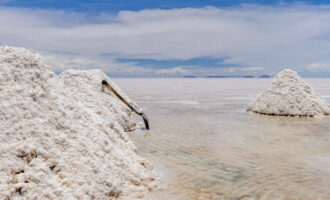How sustainable is growth in the Asia-Pacific lubricants market?
By Alison Gaines
Asia-Pacific has been the fastest growing lubricants market in the world. But how long will it continue to see sustainable growth?
Apu Gosalia, head of global competitive intelligence and chief sustainability officer at Fuchs Petrolub SE, based in Mannheim, Germany, addressed these questions in a keynote address at the F+L Week 2015 Conference organised by F&L Asia Ltd. in Singapore in March.
Gosalia discussed how the landscape has changed in recent years. On a global level, the past 15 years saw Asia-Pacific eclipsing the Americas and Europe in terms of market demand by volume.
In 2000, Asia-Pacific, the Americas and Europe each made up roughly 30% of global lubricant demand, with Africa and the Middle East making up the “rest of the world” (ROW). By 2014, Gosalia said, Asia-Pacific and the ROW made up 53% of global lubricant demand. North America’s and Europe’s market shares have decreased because consumers are using more high-quality lubricants with longer drain intervals. In contrast to Asia-Pacific, economic growth in these mature markets is slower.
in the automotive sector pushed up Asia-Pacific’s global lubricant market share over the past decade and a half; recently, however, it is seeing glimpses of a future similar to that of the Americas and Europe, with higher quality lube products potentially tempering volume demand.
Interestingly, both North America and Asia-Pacific posted growth of 1.4% in lubricant demand while Chinese economic growth slowed down to about 7% and the U.S. economy started to recover in 2014. “The markets in Asia-Pacific are not only emerging markets,” Gosalia said, “they are also mature markets. Growth rates in India and China are still there, but on a much lower level than it used to be before, and markets like Japan and Korea actually declined in 2014.”
In 2014 there was a noteworthy contrast between global lubricant demand and per capita lubricant demand. Globally, China had the largest demand for lubricants, but as a country among the top 20 lube-consuming nations, it has the second lowest lubricant demand per capita, less than the world average, which is 5 kilograms (kg) per year. The same is true for Asia-Pacific as a region. This only means one thing: a higher upside potential for Asia- Pacific.
“This speaks to the volume potential that China has,” said Gosalia. “China is a market in transition, on the edge of becoming more and more a mature market.”
In terms of China, there are two forces working against each other, he said. “What happened in Europe and North America over a period of 20 or 30 years is happening much quicker in China because on the one side, you’ve got increasing motorisation and industrialisation, so people who were riding a bike may switch and buy a car.” On the other hand, “people don’t just want to buy a car; they want to buy the best car” in China, and those require high-quality lubricants.
This contrasts with the North American market, which consumes the highest amount of lubricant per capita by far: nearly 20 kg per year, double that of the average Western European. However, “they [North Americans] still have a long way to go in terms of quality,” because there is a higher tendency in North America to buy a cheap car or to use a low-quality lubricant.
Gosalia introduced data on lubricant demand in China, India, Japan, South Korea and Indonesia to explore how lubricant demand correlates with other factors, such as steel production, car production, mineral oil demand and gross domestic product (GDP) in each country. Gosalia showed data from 2007 to 2014, and in each case, GDP and lubricant demand grew apart from each other, with lubricant demand decreasing. As consumers have more money in their pockets, he explained, they tend to buy higher quality products, which means longer-drain intervals and which translates to lower volume demand growth.
 Most people know that the industry is increasingly competitive, and Gosalia presented data illustrating one reason for this. Between the mid-1990s and 2005, according to a joint study by Fuchs and the University of Mannheim in Germany, the number of independent lubricant companies decreased from 1,500 to 590. The number of “majors” decreased from 200 in the mid-90s to 130 in 2005. (This study only included players producing 1,000 tonnes or more.)
Most people know that the industry is increasingly competitive, and Gosalia presented data illustrating one reason for this. Between the mid-1990s and 2005, according to a joint study by Fuchs and the University of Mannheim in Germany, the number of independent lubricant companies decreased from 1,500 to 590. The number of “majors” decreased from 200 in the mid-90s to 130 in 2005. (This study only included players producing 1,000 tonnes or more.)
“This speaks to the fragmentation of the industry,” Gosalia said. “At the end of 2005, the top 10 manufacturers made up 50% of the global lube market, leaving the other 700 manufacturers to share the rest.” This data came from a very extensive study, which may be repeated in a year or two, but for now, the latest available data is from 2005.
Factors causing industry contraction include the globalisation of national oil companies, new market participants, vertical diversification, the role of private equity, restructuring of majors and retraction from niches. In the past two or three years, Gosalia said, there have been several examples of large oil companies that have “retracted from niches of the lubes industry and left the field open for other, more specialised, focused lube companies… to buy these businesses.”
Between 2000 and 2014, the list of the top 15 lubricant manufacturers was shuffled around as a result of these phenomena. Between 2000 and 2014, three new players appeared on the list: Petronas, Gulf/Houghton and Pertamina. Other companies, including Indian Oil Corp., AGIP and Repsol, left the top 15.
In light of all this restructuring, the word “sustainability” takes on a different meaning.
“These days, everything’s sustainable,” Gosalia said. The word has lost some of its significance as so many companies try to improve their public image by “greenwashing.” A much more real concern for most companies is, literally, sustainability—surviving in a competitive and contracting marketplace. Fuchs had to define sustainability for itself so that it could be measured, said Gosalia.
“What you cannot measure you cannot manage,” Gosalia said, “and what you cannot manage, you cannot optimise.”
Fuchs identifies three levels of sustainability. The first level is the aforementioned “greenwashing;” the second level is “sustainable corporate control,” and the highest level is “sustainable enterprise.” Gosalia said that Fuchs currently inhabits the second level and is working on moving to the third. A company must be able to control and improve itself internally before it can aspire to bring sustainability on social, ecological and economic levels, he said.
“I think there is going to be sustainable growth in the Asia-Pacific [lubricants] market; however, in the future on a much lower level than we saw before,” Gosalia concluded. Measured in terms of volume, the growth of the Asia-Pacific lubricants industry may see a flatter slope in the coming years, he said. But its move toward higher quality products means that it could be contributing to the sustainability of the other industries it serves.







